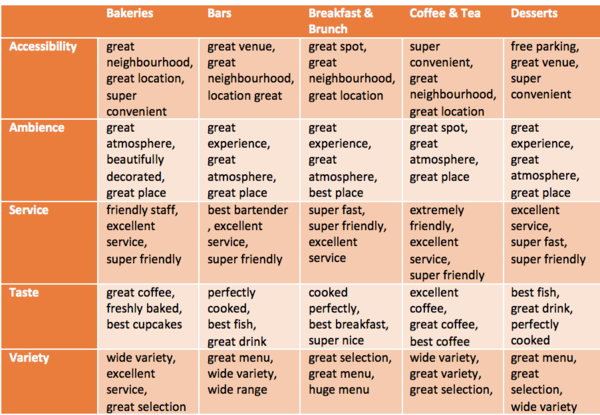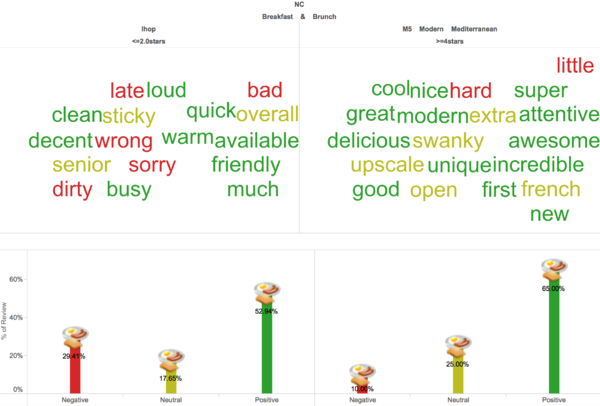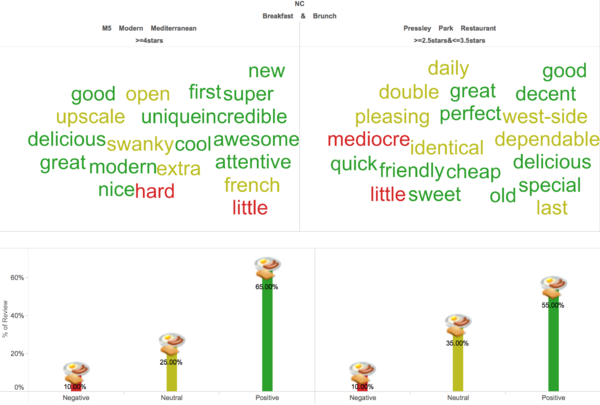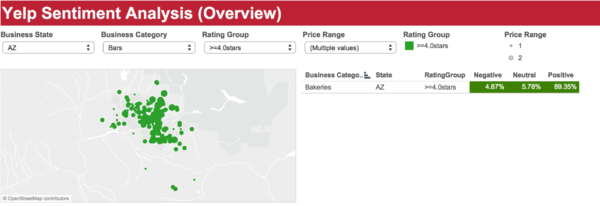Analysis - Final Analysis
| HOME | PROJECT OVERVIEW | PROJECT MANAGEMENT | ANALYSIS | FINAL DELIVERABLE |
| MidTerm Analysis | Final Analysis |
|---|
Importance = Frequency of word * Sentiment Score (-1 to -3 and 1 to 3)
Top Positive Importance Words
Top Negative Importance Words
The competitor analysis component of the dashboard allows the restaurant owners to compare the distinguishing factors between them and their competitors. For example, the restaurant owner of IHOP would be able to conclude that negative sentiment adjectives like ‘late’, ‘bad’, ‘wrong’, ‘sorry’ and ‘dirty’ appear frequently in their text review and not as frequently in the text review of its competitor such as M5 Modern Mediterranean. Likewise, there are many positive sentiment words like ‘unique’, ‘modern’ and ‘attentive’ that appear frequently in M5 Modern Mediterranean but not in IHOP. As such, the restaurant owner has to rectify the poor performing areas and at the same time try to adopt the best practices of the good restaurants.
The geospatial component of the dashboard shows the distribution of bad (below 2.5 stars), average (between 2.5stars and 3.5stars) and good (above 3.5 stars) restaurants indicated by red circle, yellow circle and green circle respectively. This would allow the new business owner to identify the potential areas that are good for setting up new restaurants. For example, if the business owner is interested to open a bar restaurant in the AZ state, he or she should set up the restaurant in areas with low distribution of good restaurants as indicated by the geospatial component of the dashboard. For existing business owners, they can use the geospatial component of the dashboard to see the current distribution of the bad, average and good restaurant to gauge their current standing and competitiveness in the area.
The composition of the positive reviews for the Beach Pizza restaurant has decreased from 100% in 2010 to 60% in 2014 as indicated by the green smiley face. This implies that there has been an increase in the level of customer dissatisfaction with regards to the Beach Pizza restaurant in recent years. Hence, the restaurant owner has to examine and rectify these poor performing areas in order to attract more customers which would in turn lead to an increase in the revenue. Likewise, this time series analysis of the composition of the text reviews can be applied to all the other restaurants. In addition, the graph would allow the restaurant owner to compare the composition of the text reviews with its competitors. This would help to explain the difference in the amount of revenue between two similar restaurants located in the same vicinity.






